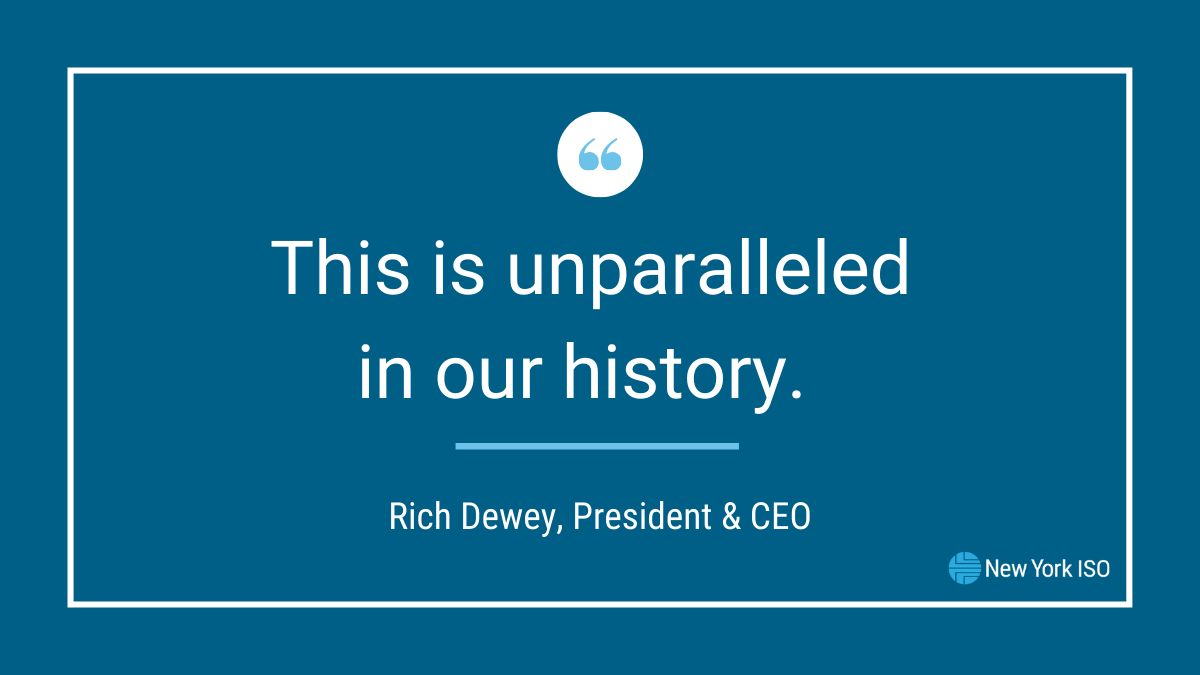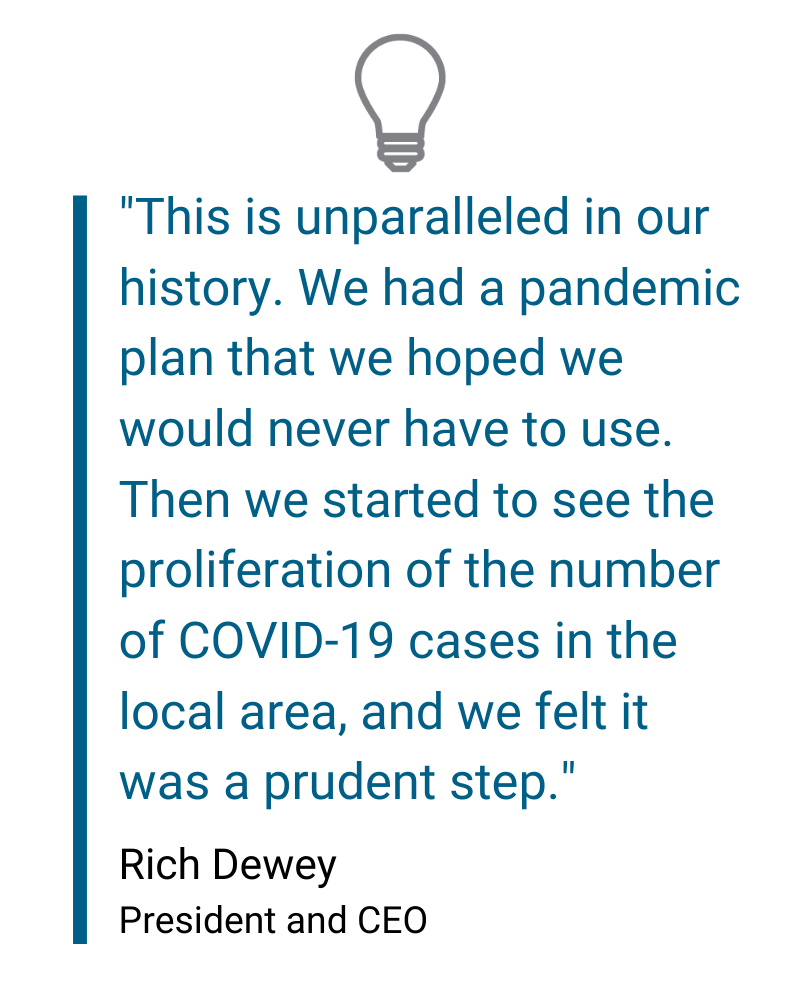Grid Operators Isolated but Unified in Keeping New York Lights On

In order to safeguard energy reliability at this time of the COVID-19 pandemic, a group of our grid Control Room operators and support staff have taken an extraordinary step: total sequestration from the outside world until further notice.
The NYISO has long had a Pandemic Response plan in place. Thankfully, it was not needed in more than 20 years of operation. Until now.
Due to the unprecedented spread of the coronavirus, particularly in and around New York State, NYISO senior leadership determined additional steps were needed to protect the health and safety of essential NYISO employees and grid reliability.
In response, a 37-person team (31 grid operators, two managers, two facilities staff and two café workers) volunteered to enter the sequestration program. This team is now completely isolated from their families and friends at two New York ISO sites: our main office outside Albany, N.Y. and a backup site about 15 miles away. At these locations, the men and women work in 12-hour shifts, and live in separate trailers during off hours.
Our primary job is to keep the power flowing in New York. Operators are on the front lines, making sure that the amount of power being generated always equals the amount of demand from the state’s nearly 20-million residents and businesses. To do that, seven operators work per shift, monitoring dozens of digital displays and directing power generators and distributors to keep energy transmission in balance. It is a highly-technical profession that requires intensive training and an analytic mind.
Our current sequestration set-up is designed to minimize potential sources of cross-contamination. The day shift works from one facility, the night shift from another. Operators were tested for COVID-19 before entering. Even within the compound, they practice constant safe hygiene and social distancing, and have their temperature checked twice a day.
Basic camping trailers are used by one or two people working the same shift. When a shift is finished, a maintenance worker (also sequestered) comes in to completely sterilize the Control Room before the next shift appears. Operators even have their own telephone handset, which they take with them when they leave the building.
A cook is also sequestered on the premises. Meals are individually wrapped for proper hygiene. There is also a trailer for showering and another for doing laundry.
“We know what all this is about and why we’re here,” said Bernie Mignacci, 61, a generation operator. “Everybody’s pitching in. That’s part of what we do.”
For some, this is nothing new. About half of our operators came from the Navy, where many ran nuclear plants to power aircraft carriers or submarines. For those who are used to being away from their families for months at a time, this is much more comfortable than life below decks.
“A walk in the park,” joked Nial Clauson, 52, a shift supervisor who spent six years in the Navy. For him, the hardest part so far was adjusting his 6 foot, 6 inch frame to the tight bunks of the campers.
Operators brought different items into the compound for exercise and entertainment during off hours: acoustic guitars, bongos, a basketball (there’s a court outside each building), a jump rope, and the beanbag toss game known as Cornhole. One operator brought a kite, though he has not yet had a chance to use it. Trailers are equipped with TVs and a wifi hotspot, although many people also brought books, laptops, board games and digital readers as well. All items were thoroughly disinfected before being allowed into the secured area.
For exercise, one operator brought his road bike and a stationary trainer. Others took exercise weights. Some jog around the quarter-mile perimeter of the compound.
Operators stay in constant touch with loved ones through phone, text, or video communication. Alex Linkem, a 38-year-old generator operator, uses much of his free time to play joint-participation online computer games with his family. Through his digital device, he is able to play simultaneously with family members while chatting. This way, he can spend time remotely with his children both locally and across the country, along with his parents and wife.
Linkem, a 10-year Navy vet, said he received a lot of support from his family, who recognize the importance of what he and his fellow operators are doing. “It really does give me that warm fuzzy,” he said.
At one site, operators walk past a sign that says “Electricity is only noticed in its absence.” The words drive home the importance of their role during this crisis.
“It’s a pretty important job to get done,” said Tim Pasquini, 32, a generation operator. “This whole quarantine and ‘shelter-in-place’ … it would be a lot less successful if people didn’t have electricity.”
How long will our staff have to stay sequestered? No one knows, but it could last from several weeks to several months. Either way, the team is prepared for the long haul, ready to keep working to keep the lights on in New York State during this time of difficulty.
“We all understand why we’re here,” said Jon Sawyer, manager of Control Room Operations. “Everybody here knows the importance of what we do and the vital part that we play to make sure everyone can have power.”
For more information on how our operators do what they do, see this blog. For more on what it takes to be an operator, click here.

